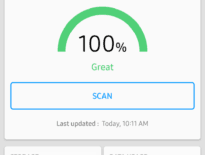From 11/2017 to 3/2018 I was a consultant for the Marketing division of Salesforce. I worked closely with the Strategy, Creative and Leadership teams to improve the mobile experience for salesforce.com.
Overview:
1) Discovery: The first step was discovery and listening activities to learn and build relationships. My first 2 weeks were spent meeting stakeholders and hearing about their ideas, goals and pain points.
2) Strategy: The next step was to work through phases of design strategy. Within 2 months I completed the following activities: heuristic review, review and synthesis of analytics data, competitive landscape analysis and a round up of relevant responsive design best practices. I operated independently, sharing early concepts (and subsequent iterations) with cross-functional team members for feedback.
3) Specifications: Then I spent 1 month on creative briefs, design explorations and prototypes.
4) Delivery: Finally, I spent 2 weeks boiling the work down to a single proposal: mobile first strategy for salesforce.co which I presented to the leadership team — half strategy, half playbook.
Highlights of revised mobile strategy:
- Mobile first (rather than responsive): to drive improvements for all users and devices.
- Invest in > 1 breakpoint: compared to a fluid grid, additional breakpoints and layout changes are more difficult to maintain, but can deliver a more tailored mobile experience.
- Paradigm shift: long lists of products and features can overwhelm users. Instead, summarize and curate. Then personalize through interaction.
- Define the mobile use case: I suggested defining the primary mobile use case as “making introductions”.
Results:
- Mobile improvements a “top 5” initiative for FY 2019
- Cross functional alignment on vision, opportunities and tactics
- Revised mobile strategy: estimated to achieve up to 25% of targeted growth ($500m)
- New insights discovered: increasing trend in mobile prospects + new data on mobile users, behaviors and devices
- Move fast: go from undefined to actionable in 1 quarter, work in parallel and around limitations.
- Be bold: paradigm shifts in content strategy, user experience and architecture


